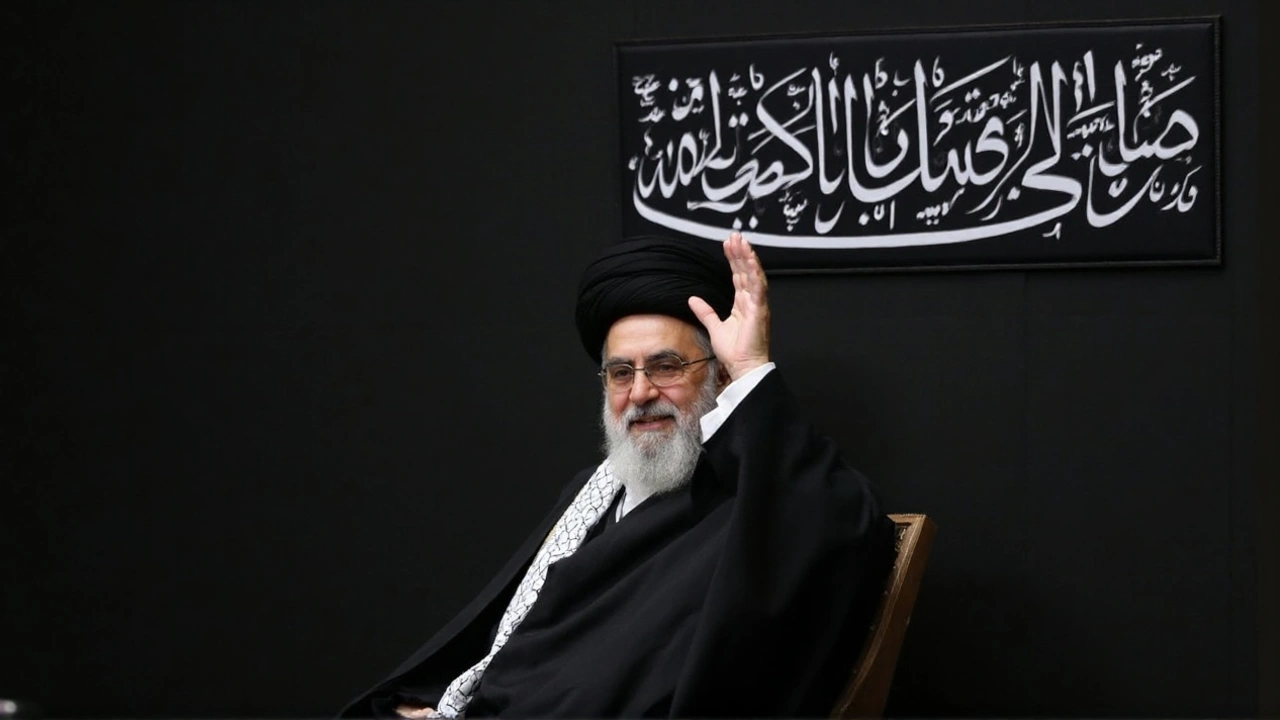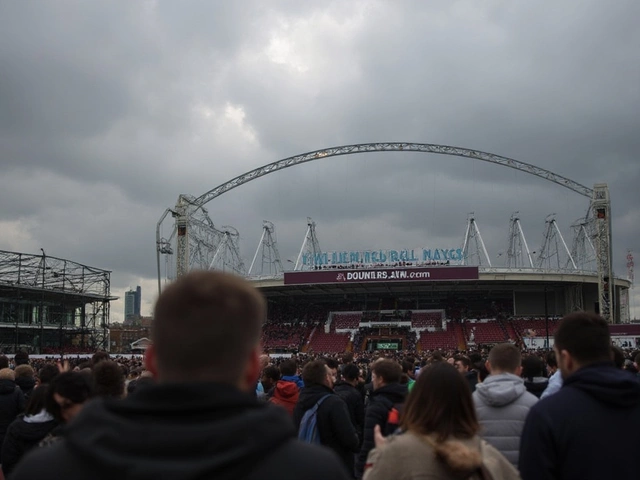Khamenei rejects U.S. demands as Trump claims air dominance and hints at wider war
Ayatollah Ali Khamenei answered Donald Trump’s ultimatum with a flat no. In a televised address, Iran’s Supreme Leader said the country “will not surrender,” framing the standoff as a test of national resolve. He warned that any U.S. military action would bring “irreparable harm” to America, accusing Washington of backing Israeli attacks and misreading Iran’s history and tolerance for pressure.
The speech came a day after Trump demanded “UNCONDITIONAL SURRENDER” from Tehran on Truth Social, then convened a Situation Room meeting with his national security advisers before speaking to Israeli Prime Minister Benjamin Netanyahu. In the same online posts, Trump claimed the United States had “complete and total control of the skies over Iran” and said his team knew “exactly” where Khamenei was hiding. He added that the U.S. would not kill him “for now,” but warned that patience was running out if missiles were fired at civilians or American forces.
An Associated Press report said Trump had earlier rejected an Israeli proposal to assassinate Khamenei at the start of the fighting. That reported decision now sits alongside stark public threats that have made the crisis feel one miscalculation away from something far bigger.
Tensions spiked after Israeli strikes on June 13 hit Iranian nuclear and military facilities, some of them buried deep. Iran responded with warnings to Israeli civilians in Tel Aviv and Haifa to leave, a message clearly meant to signal that escalation could reach Israel’s major population centers. As blasts echoed around Tehran in the days that followed, local outlets showed traffic choking major roads out of the capital. Iranian authorities did not release verified figures on departures, and the scale of evacuations could not be independently confirmed.
Khamenei cast the showdown as a choice imposed from outside—“an imposed war” or “an imposed peace”—and said Iran rejects both. He accused the United States of edging closer to direct involvement by enabling Israeli operations. “Speak to those who fear being threatened,” he said, dismissing Trump’s language as bluster. “The Iranian nation is not frightened.”
Trump, for his part, has signaled he’s open to going beyond backing Israel. He told reporters he wanted “a real end” to the conflict—“better than a cease-fire”—a phrase that left diplomats guessing what that would mean in practice. U.S. warplanes have moved closer to the region, according to defense sources, underscoring concerns that a limited campaign could widen quickly.
The tenor of the exchange—Israeli strikes on high-value targets, Iranian vows of resistance, and a U.S. president threatening direct action—has alarmed analysts who have watched similar flare-ups stop short of all-out war. This one is different in one key respect: the explicit talk from Washington about command of the airspace over Iran and veiled references to leadership targets, which add legal and strategic risks that previous administrations sought to avoid.
What’s driving the confrontation—and what could come next
The trigger for this round of fighting was Israel’s strike on Iranian infrastructure on June 13. Deep-buried nuclear sites—built to withstand heavy bombardment—have long been the hardest targets in the region. While details of the damage remain murky, the message was unmistakable: Israel was willing to test Iran’s defenses above and below ground. Tehran’s warning to evacuate Tel Aviv and Haifa was just as clear, signaling intent to expand retaliation beyond border zones or proxy battlegrounds.
Washington’s role sits at the center of Iranian messaging. Khamenei said the United States was complicit in the Israeli strikes and suggested recent U.S. remarks only strengthened that view. Trump’s claim of air dominance over Iran pushed that point further, implying that U.S. assets—manned or unmanned—are actively shaping the battlespace. The White House did not release technical details of any operations, and independent verification of air activity has been limited by the fog of war and restricted airspace.
Legally, the rhetoric is walking a tightrope. Executive Order 12333 bars assassination, a policy that has guided U.S. presidents for decades. Trump’s line—“we are not going to take him out… at least not for now”—will fuel debate over how the U.S. defines targeted killings versus lawful strikes in wartime and what counts as imminent threat. Any direct order to attack Iran would also clash with the War Powers Resolution unless Congress authorizes sustained hostilities. Those constraints matter because they shape how allies and adversaries read Washington’s red lines.
For Khamenei, the language of resistance is not new. He has anchored his leadership in the trauma and triumph narratives of the 1980–88 war with Iraq and in decades of sanctions and covert conflict with Israel and the United States. Calling the current standoff an “imposed peace” or “imposed war” taps into that memory—deterrence through endurance. It also rallies domestic support at a time when Iranians are under economic strain and bracing for more instability.
Israel, meanwhile, has kept operational details close. Officials have not publicly confirmed the full scope of the June 13 strike package or subsequent missions. But the selection of targets—nuclear and military—signals an effort to weaken Iran’s long-term capabilities while deterring immediate retaliation. Israel’s calculus rests on the idea that decisive blows now will reduce risk later. Iran’s view is the opposite: that sustained pressure only hardens its resolve and broadens its response options.
The human cost has climbed on both sides of the region’s divide. In Iran, residents described bursts of explosions on the outskirts of Tehran, sirens in multiple neighborhoods, and long lines at gas stations. Some families left the capital for northern provinces or toward central cities, fearing more strikes. The exact numbers remain unclear. State media urged calm and showed footage of emergency crews and reinforced air defenses. In Israel, air raid alerts and shelter advisories have become part of daily life as officials brace for more missiles or drones if the conflict escalates.
The risk of a domino effect hangs over the entire map. Iran’s network of allies and partners—Hezbollah in Lebanon, militias in Iraq and Syria, and the Houthis in Yemen—can open new fronts quickly. A single strike that causes mass casualties in Israel, Iran, or at a U.S. base could drag multiple actors into a spiral of retaliation. The Strait of Hormuz, through which a large share of the world’s oil flows, is a perennial flashpoint; so are U.S. positions in Iraq and Syria, which have been hit by rockets and drones in past flare-ups. That’s why talk of air superiority or leadership targeting resonates far beyond Tehran.
Energy markets are already on edge. Even the hint of expanded conflict around the Persian Gulf tends to push up risk premiums. Tanker operators start recalculating routes, insurers hike rates, and governments weigh strategic reserves. None of that requires a formal declaration of war—just the perception that a missile or mine could disrupt traffic through chokepoints.
Diplomacy, so far, sits in the background. There is no announced mediation track, and public statements from Tehran, Washington, and Jerusalem have hardened, not softened. Historically, back channels have involved Oman, Qatar, and European intermediaries. The International Atomic Energy Agency will watch closely for any sign that nuclear facilities have been compromised or that Iran is changing the speed or scope of its program. Without a quiet lane for talks, miscalculation becomes more likely.
Information warfare is part of the picture, too. Trump’s claim that the U.S. controls the skies and knows Khamenei’s location is meant to deter and to reassure domestic audiences that Washington holds the upper hand. Khamenei’s answer—don’t speak to Iranians in the language of threats—aims to signal that deterrence cuts both ways. Both sides are talking past each other while speaking to their own supporters. In that environment, rumors travel faster than facts. Some reports out of Tehran described massive flight from the city; independent confirmation has been limited, and numbers vary widely.
The military math is blunt. Iran fields a large inventory of ballistic missiles and armed drones, and it has shown it can coordinate salvos that stress air defenses. Israel maintains layered missile defenses and deep-penetration capabilities. The United States brings unmatched logistics, surveillance, and strike power. If Washington moves from threats to action, the first hours would likely aim to blind radars, suppress air defenses, and cut command networks—steps that could invite counterstrikes across the region. Each rung on that ladder adds pressure on leaders to respond, narrowing off-ramps.
At home, both leaderships face political incentives that complicate restraint. Khamenei’s framing of national dignity and resistance is core to his legitimacy. Backing down after promising to stand firm would carry a cost. For Trump, taking a tough line aligns with his public brand and his past approach to Iran, including his 2018 withdrawal from the nuclear deal and the 2020 strike that killed Qassem Soleimani. Signaling dominance—“complete and total control of the skies”—plays to that audience, even if the practical choices in the Situation Room are messy.
The regional map offers few easy escapes. If Hezbollah enters in force from Lebanon, Israel will face a two-front test with thousands of rockets and drones. If U.S. troops in Iraq or Syria are hit hard, Washington will feel pressure to respond directly, not just through sanctions or cyber operations. If the Houthis target shipping in the Red Sea, global supply chains will feel the shock. That’s why every public word—from a televised address in Tehran to a social post from Washington—carries weight far beyond the immediate audience.
So where does this go? Several signposts matter in the near term:
- Whether Israeli strikes continue against deep targets inside Iran or shift to more limited aims.
- Whether Tehran authorizes direct ballistic or large-scale drone attacks on major Israeli cities, beyond warnings.
- Whether Washington moves from deployments and threats to overt action, invoking self-defense or collective defense.
- Whether a back channel opens—through a Gulf mediator, Europe, or the U.N.—to deconflict airspace and set limits.
For now, both capitals are doubling down. Khamenei says the nation will not submit to ultimatums. Trump says the U.S. can strike where it wants and knows where Iran’s top leader is. The risk is obvious: when leaders speak in absolutes, every step backward looks like defeat. And in this crisis, one misread radar return or one errant missile could turn sharp words into a regional war neither side says it wants.
What remains constant is the central role of Iran in this showdown—its choices, its red lines, and its willingness to absorb pain to make a point. Israel is trying to rewrite the cost-benefit for Tehran’s nuclear and military programs. Washington is trying to deter both sides from moves that could trap the United States in a war. The space between those goals is shrinking by the day.





